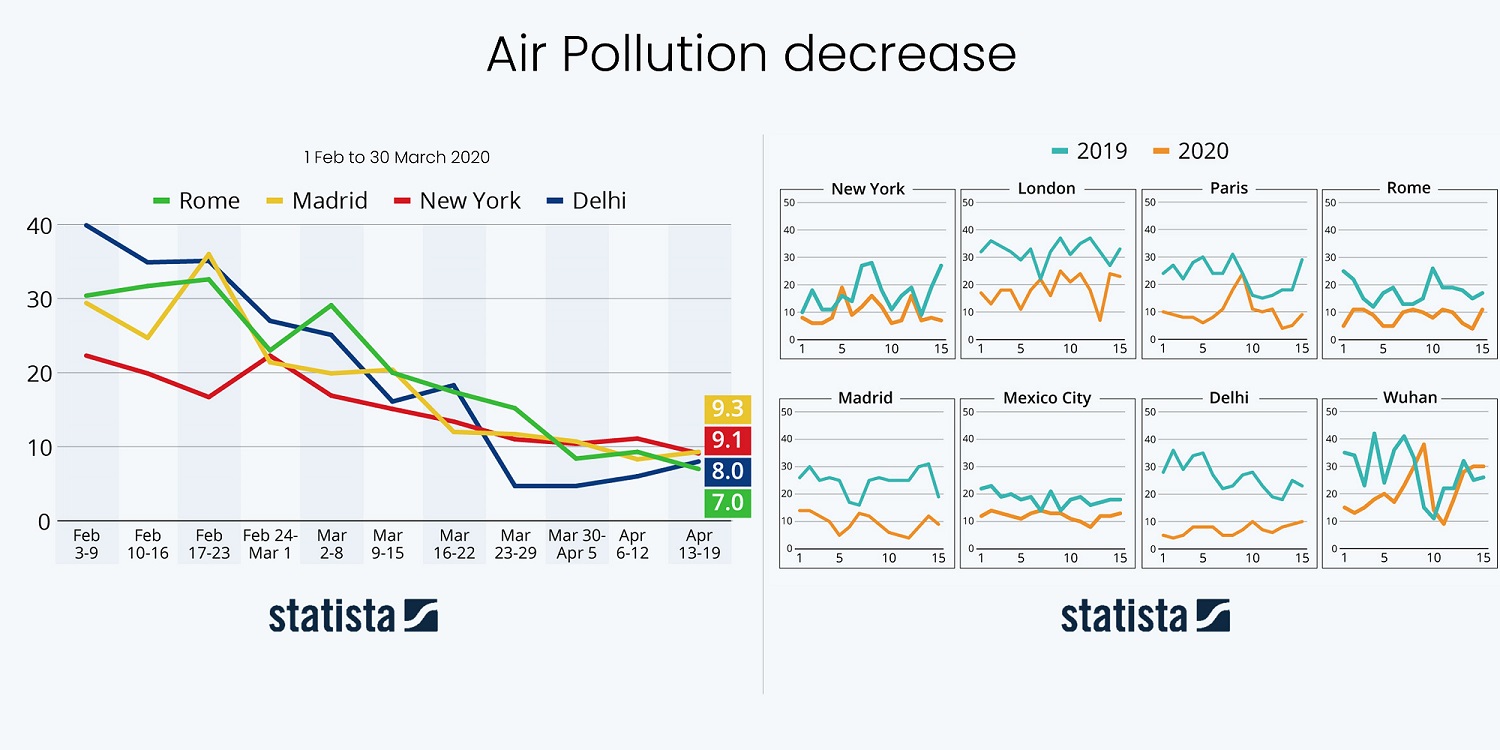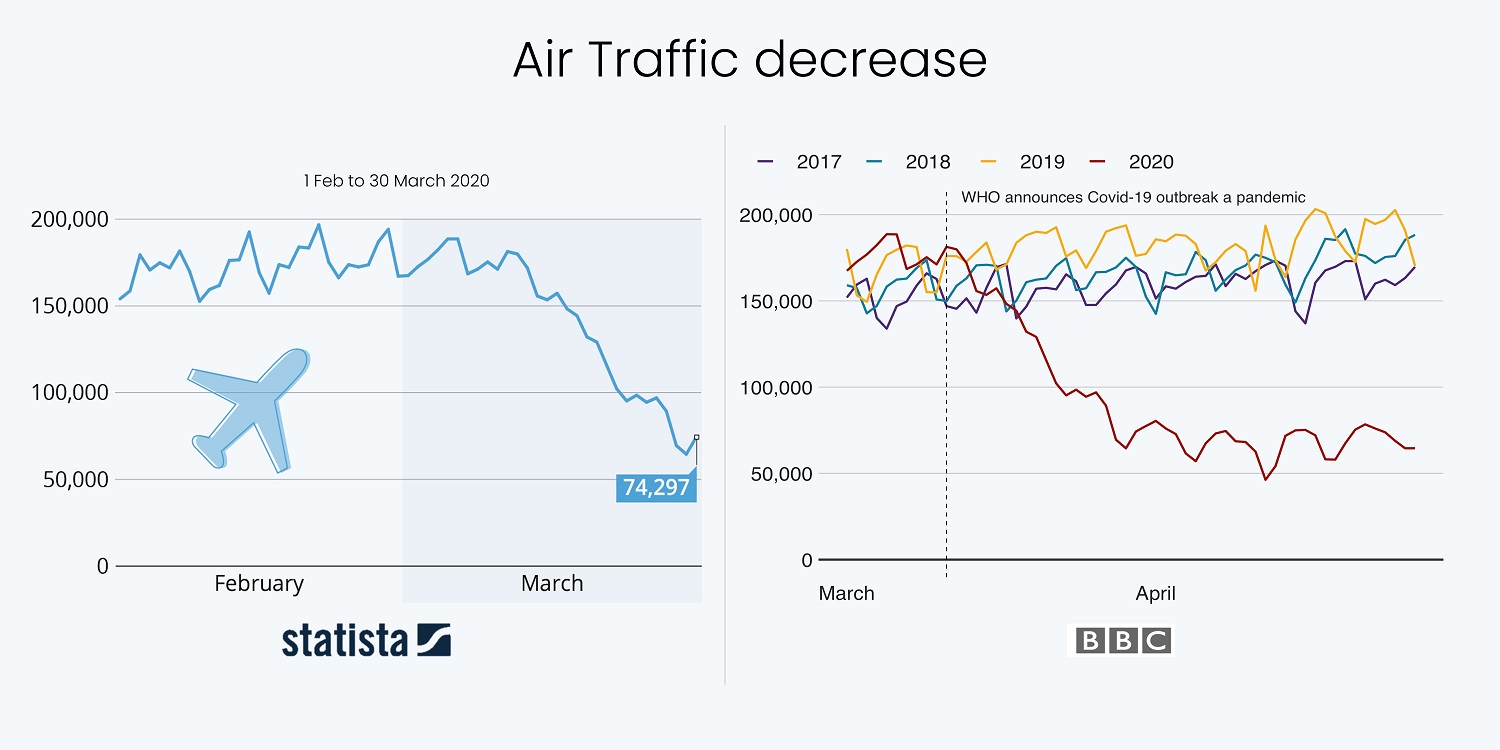As the entire world grapples with the novel coronavirus, the ozone layer of the earth has, at last, started healing itself.
Chemicals comprised of chlorine and bromine atoms are discharged to the atmosphere through human activities, such as air pollution. These chemicals combine with certain climate conditions to cause reactions in the ozone layer, annihilating the ozone particles. One chlorine atom can annihilate more than 100,000 ozone particles before it is drawn out from the stratosphere. Ozone can be annihilated more quickly than it is naturally created. Depletion of the ozone layer happens all around the world. This serious exhaustion of the ozone layer is referred to as the ‘Ozone Hole’. An Ozone hole is termed when the ozone concentration drops below 220 Dobson units (DU).
So is the ozone layer healing itself? Yes, it’s becoming clearer each day that the scale of the disturbance brought by the novel coronavirus is nothing as humans have ever seen. On an average, about 2.57 million pounds of carbon dioxide is transmitted into the air each second. One of the pointers of the pandemic’s expansive effect is its impact on non-renewable energy source utilization such as decrease of carbon dioxide emissions and fossil fuel consumption, which has allowed the ozone layer to heal itself.
About 36 billion tons of CO2 is released into the atmosphere each year. Recent information discharged by NASA (National Aeronautics and Space Administration) and ESA (European Space Agency) demonstrates that environmental pollution in the epicenters of COVID-19, for example, Wuhan, Italy, Spain and USA and so forth has reduced up to 30%.
AIR POLLUTION
The concentration of NO₂ and CO₂ has significantly diminished while urban areas are on lockdown during the coronavirus pandemic. NO₂ is a gas produced when fossil fuels are burnt (traffic, industrial facilities) and it is a good sign of human movement outside the homes.

This has helped decrease the air pollution in several cities across the world and it is yet another reason for the ozone layer to heal. Read more here.
AIR TRAFFIC
Information from site Flightradar24 shows the size of interruption COVID-19 is causing to the global airline industry. The pandemic has brought government-forced travel restrictions. The information shows that only 196,756 flights had flown on February 21st, a number that tumbled to roughly to 155,000 around the middle of March. By March 29th, it had fallen much further to only 64,522. That caused an exceptional decrease in worldwide air traffic in the course of recent weeks, which marks the second reason for the healing of the ozone layer. Read more here.

ROAD TRAFFIC
So as to decrease the up-going graph of the fast spread of COVID-19, several nations have taken major actions, for example, shutting of schools, manufacturing plants, and workplaces as well as cancelling public events. In many nations, these administrative measures include a request for travel limitations and residents to remain at home as much as possible. As a result, there has been a tremendous decrease in rush hour on the streets and in air transport, decreasing the carbon dioxide emissions and allowing the ozone layer to heal. Read more here.

OZONE HOLE
The ozone layer covers the whole planet and ensures life on earth by absorbing dangerous ultraviolet-B (UV-B) radiation from the sun. The UV-B rays of the sun are not safe to any creature on the planet. Aquatic plants and creatures are not even safe. UV-B rays can cause skin cancer, eye disorders and many conditions in humans. These rays can also enter into the water and can kill small plants and creatures. The ozone hole in Antarctica decreases the krill availability, causing the penguins to starve.
The excess of ozone depleting substances being released into the air has led to the occurrence of ozone holes over the Arctic and Antarctica. Although the Arctic hole has now closed, but the Antarctic hole still remains open. The researchers in the European Union’s Copernicus Atmosphere Monitoring Service (CAMS) reported on April 23, 2020, that the biggest ozone hole on the planet which was identified over the North Pole has at last closed. Researchers who were tracking the ozone hole at CAMS made the declaration towards the end of last week, taking note that this somewhat uncommon hole was caused not by human action, but by a particularly strong Arctic polar vortex.
CONCLUSION:
Global action taken under the Montreal Protocol has decreased the exhaustion of the ozone layer and has permitted it to begin recovering. Analysis shows that stratospheric concentrations of ozone exhausting substances are decreasing. Because of global activity, the ozone layer is expected to recover over the equator by the year 2050 and over the poles by 2065. However, much stays to be done to guarantee a consistent recovery. The ozone layer is already healing itself… All it needs is our patience for nature to do its job.